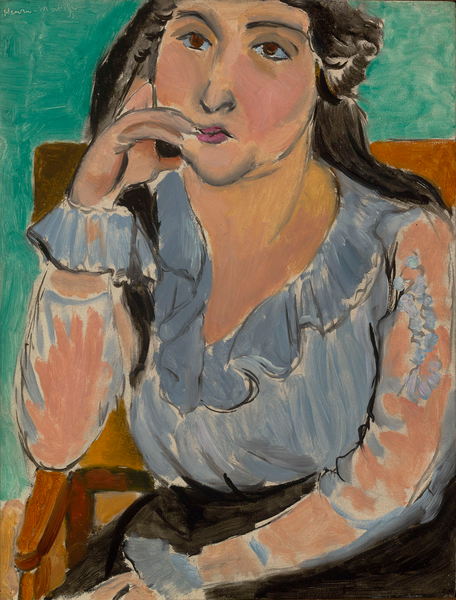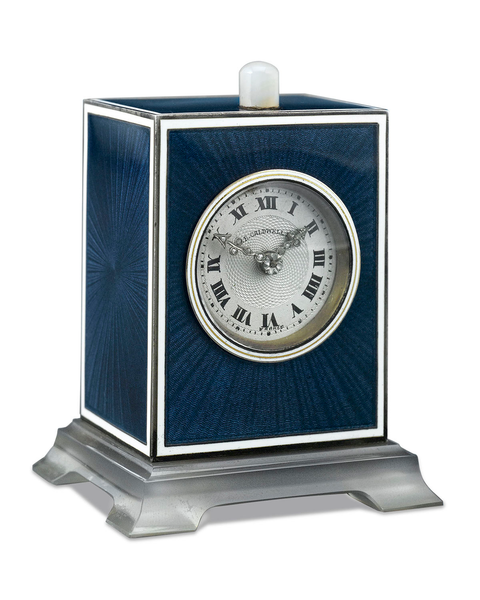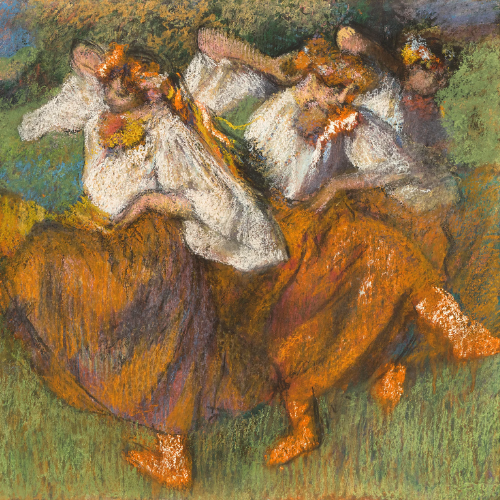The turn of the 20th century marked the beginning of a period of global metamorphosis. As the Victorian Era ended with Queen Victoria’s death in 1901, decolonization left the status of many realms under English rule uncertain. The next hundred years would bring remarkable technological advances, two World Wars, economic collapse and rebirth, social transformations and even space travel. As artists responded to their changing times, the type of art they produced began to reflect new aesthetic, social and artistic interests. Color palettes evolved, new subjects were introduced and techniques changed in all visual art forms. The 20th century also experienced the birth of several art styles, including abstract art movements like action painting and Abstract Expressionism.
It is difficult to select only a handful of influential artistic movements from the last hundred years; as the world ebbed and flowed, many artists rose to the challenge of creating something new and fresh. It is hardly surprising that such a formative period produced some of art history’s most visionary artists. While the following will outline a timeline of American and European modern art movements, many of these movements do not fit neatly within years or decades. This movement in art styles fully represented the societal changes that were molding and shaping modern day civilization. Influences from earlier periods always remained part of a cultural milieu, even as artists forged new creative pathways. These 20th-century greats left a lasting legacy, and laid the foundations for the emergence of contemporary art movements in the last decades of the century.
What is Fauvism?



Melon, raisins, poires, maïs et pot bleu by Henri Manguin. Painted 1942. M.S. Rau, New Orleans (Sold).
Building off of the work of Impressionists and Post-Impressionists of the fin de siècle, Fauvism emerged in France right at the turn of the 20th century. Most recognizable for their bold color palette and painterly stylization of forms, this artistic movement included visionaries Henri Matisse, Andre Derain, Henri Maguin, Raoul Dufy, and Louis Valtat, among others.
Color remained the dominant force in the Fauvist art movement. Henri Matisse, often regarded as the foremost artist of the movement, once described the central tenant of his work as being inextricably bound to his palette: “What I am after, above all, is expression. . . The chief function of colour should be to serve expression as well as possible. My choice of colours does not rest on any scientific theory; it is based on observation, on sensitivity, on felt experiences. . . I simply try to put down colours which render my sensation.”
This is not to say that all art critics were immediately receptive of the Fauvists’ often garish hues. Art critic Louis Vauxcelles was so vexed by Matisse and Derain’s work that he gave the artists the French moniker les fauves, which translates to “the wild beasts.” Today, art historians and art lovers alike recognize that the Fauvists were highly successful color theorists whose joyful compositions bring a lasting, dynamic energy — certainly not something mere “wild beasts” could achieve.
What is Art Deco?

Art Deco descended from the similarly-named fin de siècle art movement, Art Nouveau; however, there are important differences between Art Deco and Art Nouveau. The Art Deco movement took its name from the 1925 Exposition des Arts Decoratifs et Industriels Modernes, and sought to elevate industrial design to the level of fine art. Often incorporating streamlined geometric forms that are at once organic and rectilinear, Art Deco often elevated clean, refined aesthetics above all. Visual artists like Tamara de Lempicka, Erté, and others stand out within the movement for their adherence to its style and subject matter.

Art Deco design sensibilities did not influence visual art alone. René Lalique, the period’s ultimate Renaissance man, explored the possibilities available in the avenues of art glass, art deco jewelry and furniture.



For more information on Art Deco artists, read more here. If you’re interested in this modern art movement, learn more about the differences between Art Deco vs Art Nouveau.
What is Surrealism?


The First Exhibition of the Surrealists occurred in London in 1925, marking the beginnings of one of the most stimulating artistic movements of the early 20th century. By the end of the 1930s, the Surrealists achieved international recognition, particularly following The International Surrealist Exhibition of 1938 at Galérie Beaux-Arts, which featured over sixty artists from around the globe. This exhibition represented the apex of the movement, garnering thousands of visitors from Paris and beyond, and is remembered as an innovative, immersive experience for viewers.
André Breton, a poet and author often hailed as the founder of the movement, described Surrealism in his 1924 Surrealist Manifesto as: “Psychic automatism in its pure state, by which one proposes to express…the actual functioning of thought…in the absence of any control exercised by reason, exempt from any aesthetic or moral concern.”
Many artworks from this movement exude a dream-like, otherworldly quality, including works from Giorgio de Chirico, Salvador Dalí, Rene Magritte, Frida Kahlo, and Joan Miro, among others. Though the radical Dada movement and its exuberant rejection of the modern art world only lasted a few short years, many Dada artists, like Max Ernst, Man Ray and Marcel Duchamp, became closely associated with the Surrealists. The reflections on fantasy, psychoanalysis, and the collective unconscious were shared among the two movements, as Surrealists were particularly engrossed with the illusive, non-sensical nature of dreams.



What is Cubism?

Truly avant-garde in its inception during the first decade of the 20th century, the Cubism art period quickly took the art world by storm. An essential principle of the movement was to render objects from several perspectives and positions, rather than one; this unique approach often resulted in a fragmenting of forms into rectilinear and geometric shapes. The term “Cubism” was coined by French critic Guillaume Apollinaire, who wrote in 1912: “In merely representing a reality perceived by the eye [the Cubists] could produce little more than trompe-l’oeil effects, which with foreshortening and perspective deformed the basic qualities of form as conceived by the mind.”
This pioneering art movement, one of the most influential of the last century, gave rise to perhaps the most recognizable artist of our times: Pablo Picasso, who also happens to be one of the most influential portraiture artists of all time. With an oeuvre that transcends art history and the status of being a household name, it is perhaps not surprising that Cubism has remained incredibly popular even after its rise in the early 1910s. Other Cubists and famous abstract artists of note include Georges Braque, who began his artistic career as a Fauvist before becoming extremely influential in the early development of Cubism. Though the movement developed alongside Art Deco and shares an interest in geometry, Cubism's unique perspective on abstraction sets it apart.


What is Social Realism?


The intervening period between the two World Wars saw social and economic turmoil worldwide. After the sustained horror that World War I wrought, many who returned home from the conflict found themselves facing a severe economic downturn in the Great Depression. Artists turned to their neighbors for artistic inspiration, capturing with dignity the day-to-day life and moments of human resilience without romanticizing their struggles. These hopeful images found favor among many viewers, who were grappling to find their own tenacity in trying times. Painters like Peter Hurd, George Bellows, Edward Hopper and Grant Wood and photographers like Dorothea Lange and Walker Evans became documentarians of their times, preserving these scenes for future generations.
While this movement definitely began to explode in the United States at this pivotal post-war moment, this reinvigorated interest in realism was shared around the globe. Artists like Diego Rivera and Frida Kahlo are associated with the social realist movement in Mexico, often highlighting the contributions of indigenous peoples on the social fabric of their communities.

A contemporaneous offshoot of social realism with a shared interest in everyday life, American Illustration became a movement all its own, and only recently has been elevated to the deserved status of fine art. The style grew in tandem with popular publications like the Saturday Evening Post, Good Housekeeping, Life and others where American art illustrators executed iconic cover illustrations and ads. Visionaries like J.C. Leyendecker and the beloved Norman Rockwell created a visual language all their own — one that combined a pleasant humor and a nostalgic realism. As thousands of Americans nationwide brought copies of their favorite magazines into their homes, the style became omnipresent, entering the cultural milieu as a portrait of a country and people in a moment of great change. Reflecting on the movement later, Norman Rockwell would remark: “The '20s ended in an era of extravagance, sort of like the one we're in now. There was a big crash, but then the country picked itself up again, and we had some great years. Those were the days when America believed in itself. I was happy and proud to be painting it.”


What is Abstract Expressionism?



Abstract Expressionism is often viewed as the first major Post-War artistic movement, following the ending of World War II. The international paradigm had started to shift; where Paris and London had long stood as the bastions of the art world, the avant-garde center moved to New York City. American art movements like Abstract Expressionism — plus kindred movements like Color Field, Hard-Edge and action painting styles — had become the cutting edge.
Abstract Expressionist art carries a certain level of emotional or visual intensity, not unlike the Expressionists of the 19th century. A major difference in this burgeoning artistic style, however, was the anti-figurative component that led to a further abstraction of the subject matter. Often utilizing a gestural technique with thick layers of paint applied in large strokes, Abstract Expressionism sought to focus more on the process of creating art rather than the final outcome. Artists like Willem de Kooning painted his canvases endlessly and struggled to deem an artwork “complete.” Other Abstract Expressionists and action painters including Jackson Pollock, Helen Frankenthaler, Lee Krasner and Robert Motherwell, as well as Color Field painters like Mark Rothko, found their own unique processes of creating emotionally impactful abstraction.


What is Pop Art?


Pop art is recognized today as one of the final artistic movements of the 20th century, bookending modernism before the rise of global contemporary art. Many argue that artists like Jasper Johns and Robert Rauschenberg, who found a niche in between abstract expressionism, collage and popular culture, represent the foundations of this essentially American movement. Pop art was inspired by commercial and popular culture, often including elements of mass production or advertisement. These artists adapted and elevated a ubiquitous and somewhat quotidian visual culture to the level of fine art.
The most revered artist of this movement is Andy Warhol, one of the most sensational and unconventional artists to arrive on the scene in the 20th century. Motivated by a desire to elevate popular and commercial culture to the realms of high art, Warhol has become a household name, known for his prolific and recognizable oeuvre. Just this year, Warhol shattered his auction record with the sale of his 1964 Shot Sage Blue Marilyn for $195million — the highest price ever fetched for an American artwork. His commercial success both during his lifetime and today is a testament to the lasting cultural impact of his artwork.
Other Pop artists of note include Roy Lichtenstein, Richard Hamilton, and Charles Demuth.



Understanding each of these art movements and the rare art pieces they offer can help you diversify your own art collection and embrace the history behind it. From abstract art with geometric shapes to the creations of pop artists, there's a wide variety for you to learn about. Now that you’ve had a 20th century art history timeline overview, it’s time to visit our collection of fine art to discover pieces that speak to your style.
Sources:
André Breton, Manifestoes of Surrealism, translated from the French by Richard Seaver and Helen R. Lane (Ann Arbor: The University of Michigan Press, 1969), 26.
Guillaume Apollinaire, “The Beginnings of Cubism,” 1912. As translated in Herschel Browning Chipp, Peter Selz, Theories of Modern Art: A Source Book by Artists and Critics, University of California Press, 1968, pp. 221-248
Trans. by Jack D. Flam, Matisse on Art (London: Phaidon, 1973), 32-40.







